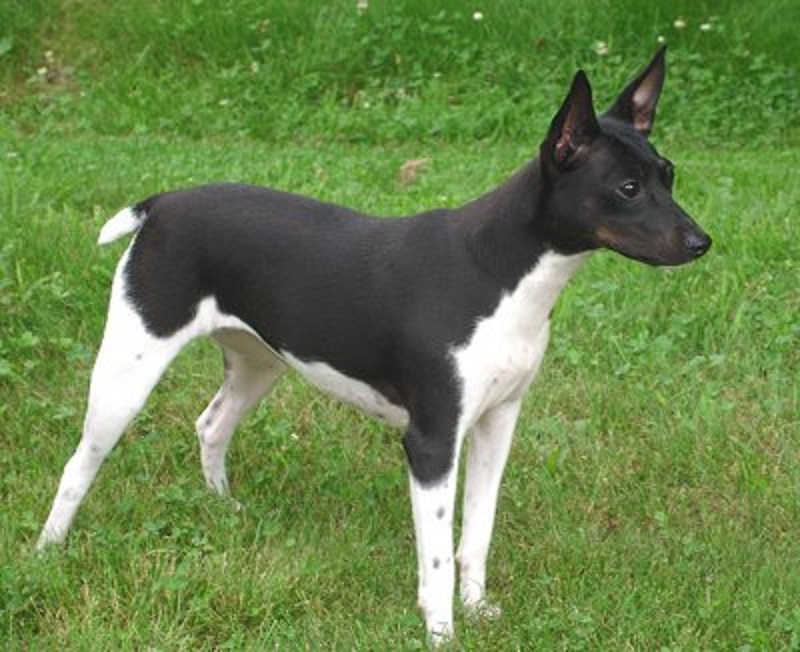
Rat Terrier

Navigate through the tabs
Navigate through the tabs below to view the breed's info of your interest.
The breed's info is divided in four sections; namely:
the breed's history ,
the breed's main stats ,
the dog's potential health issues
and finally, how the breed scored in 26 different categories.
All the above information should give you a respectively good overview for the dog of your interest.
Dog Breed's Main Info
The Breed's History:
The earliest known record of a rat-catching dog is that of "Hatch", whose remains were recovered from the Mary Rose, the flagship of Henry VIII, sunk in 1545 and re-raised in 1982.
Hatch is thought to have been a mongrel, and was brought on board to control the rat population.
The breed name comes from the occupation of its earliest ancestors brought to the US by working-class British migrants as the dogs were used in rat-baiting. However they were, for the most part, bred for speed.
Their speed is used for controlling vermin and hunting small game such as squirrels and hares. After the 1890s, as the breed type became popular in America, Beagles, Italian Greyhounds and Miniature Pinschers were bred in.
Many of the foundation Rat Terriers were indistinguishable from small mixed-breed hunting dogs known as "feists".
The smaller varieties diverged from the Rat Terrier line very early on, with UKC registration for the Toy Fox Terrier beginning in 1936.
Rat Terriers were cherished as loyal hunting companions and efficient killers of vermin on 20th century American farms: as a result, they were one of the most popular dog types from the 1920s to the 1940s.
However the widespread use of chemical pesticides and the growth of commercial farming led to a sharp decline in the breed from the 1950s onwards. Breed loyalists maintained the bloodline, leading to the modern Rat Terrier.
The genetic diversity of the Rat Terrier has contributed to the overall health, keen intelligence, and soundness of the breed. Most modern breeds were developed from a few founding dogs and then propagated from a closed gene pool.
In contrast, the Rat Terrier has benefited from a long history of refinement with regular outcrosses to bring in useful qualities and genetic variability.
Country of Origin:
United States
Breed Group:
Terrier
Height:
1 foot, 1 inch. to 1 foot, 4 inch. (30,02 to 40,64 cm)
Weight:
10 to 25 pounds (4,53 to 11,34 Kg)
Life Span:
13 to 18 years
Potential Health Issues:
Allergies,
Incorrect Bites,
Patellar Luxation,
Demodectic Mange
Adaptability
Apartment Living:
First Time Owners:
Sensitivity:
Being Alone:
Cold Weather:
Hot Weather:
Friendliness
Affection With Family:
With Kids:
With Dogs:
With Strangers:
Health and Grooming
Shedding:
Drooling:
Easy To Groom:
Overall Health:
Weight Gain Potential:
Size:
Training
Easiness:
Intelligence:
Mouthiness:
Prey Drive:
Barking or Howling:
Wanderlust:
Need For Exercise
Energy Level:
Intensity:
Exercise Needs:
Playfulness:
Our Mobile Application
Check out Our Mobile Application "Dog Breeds Central"
